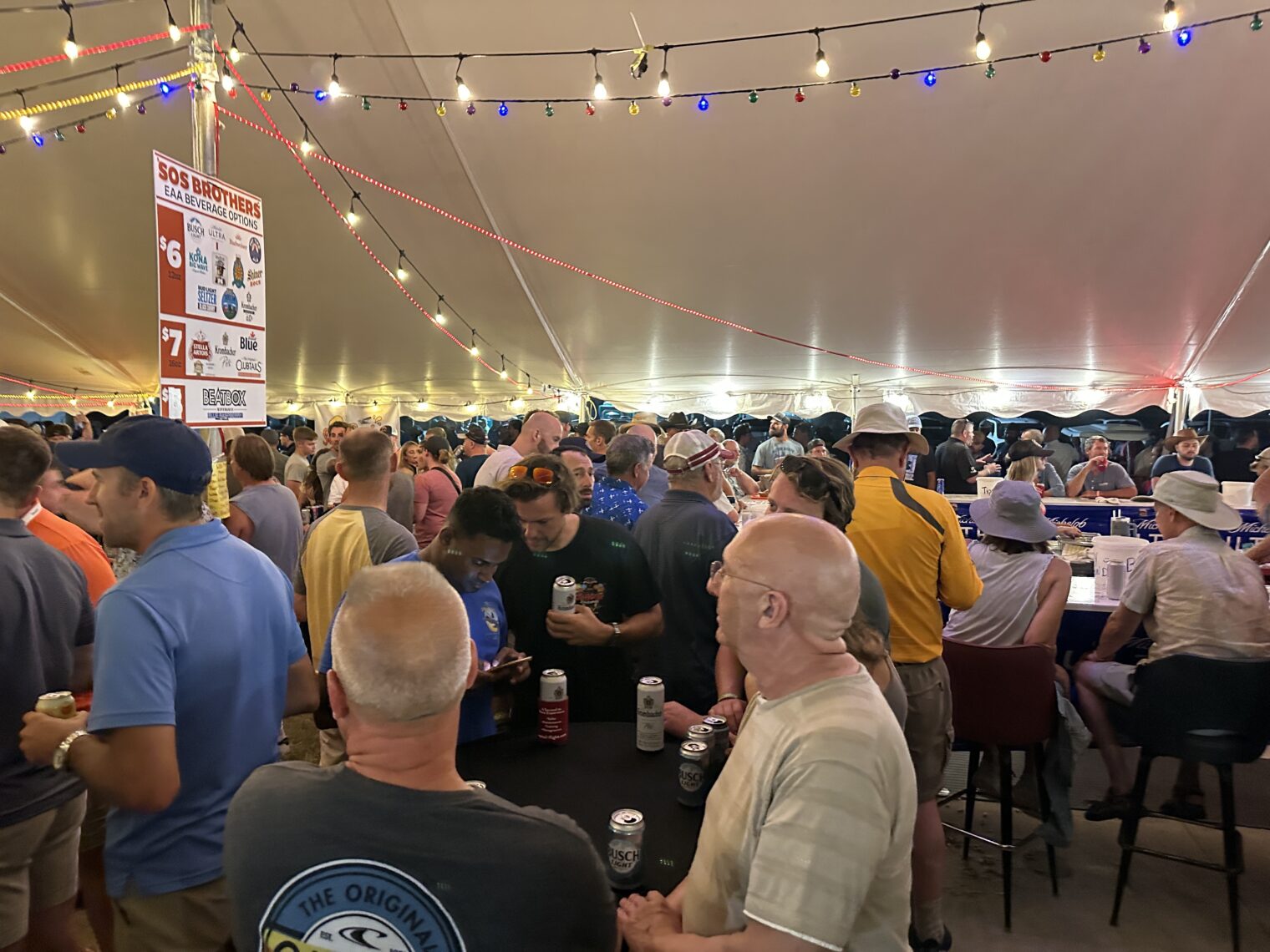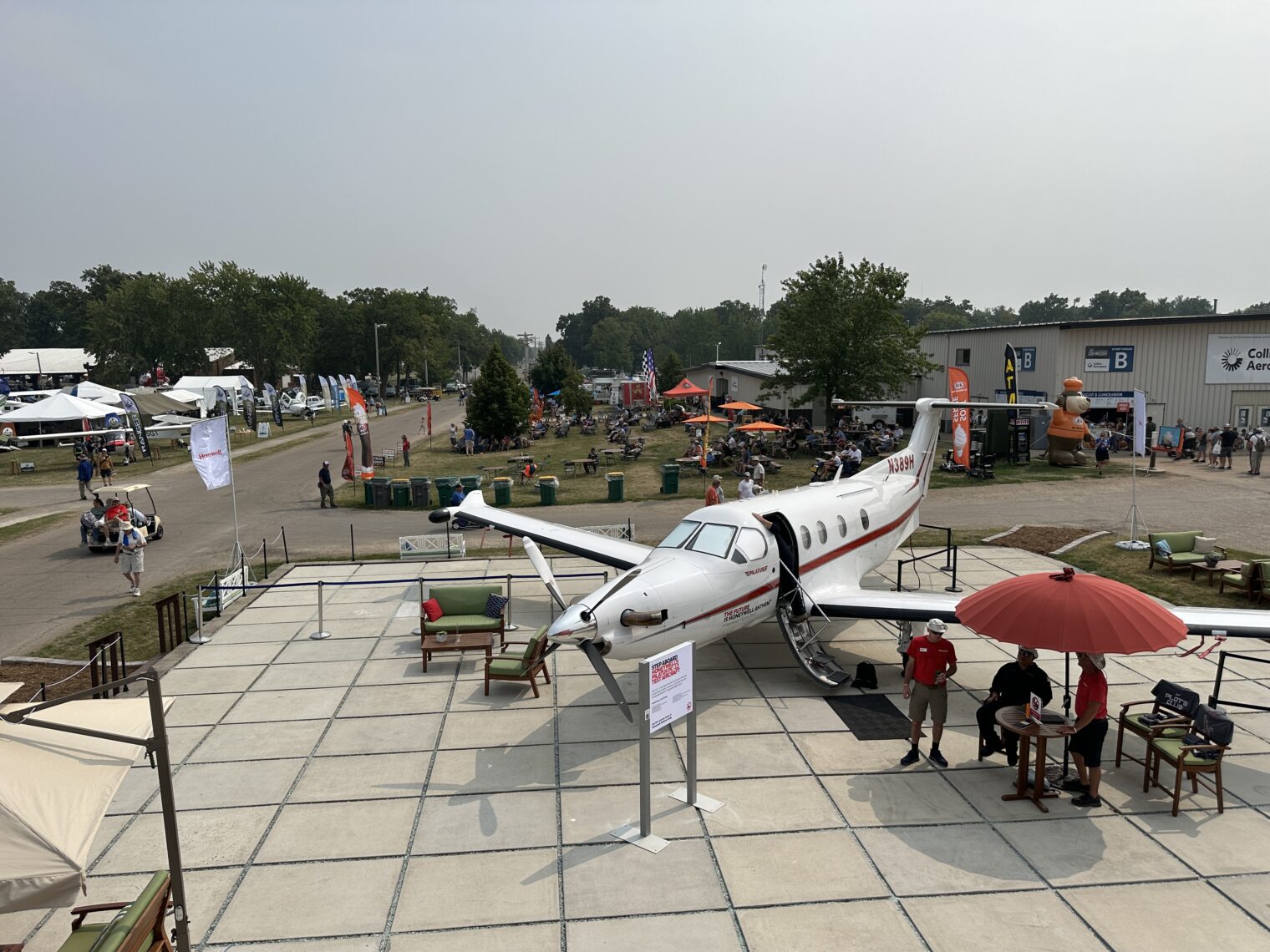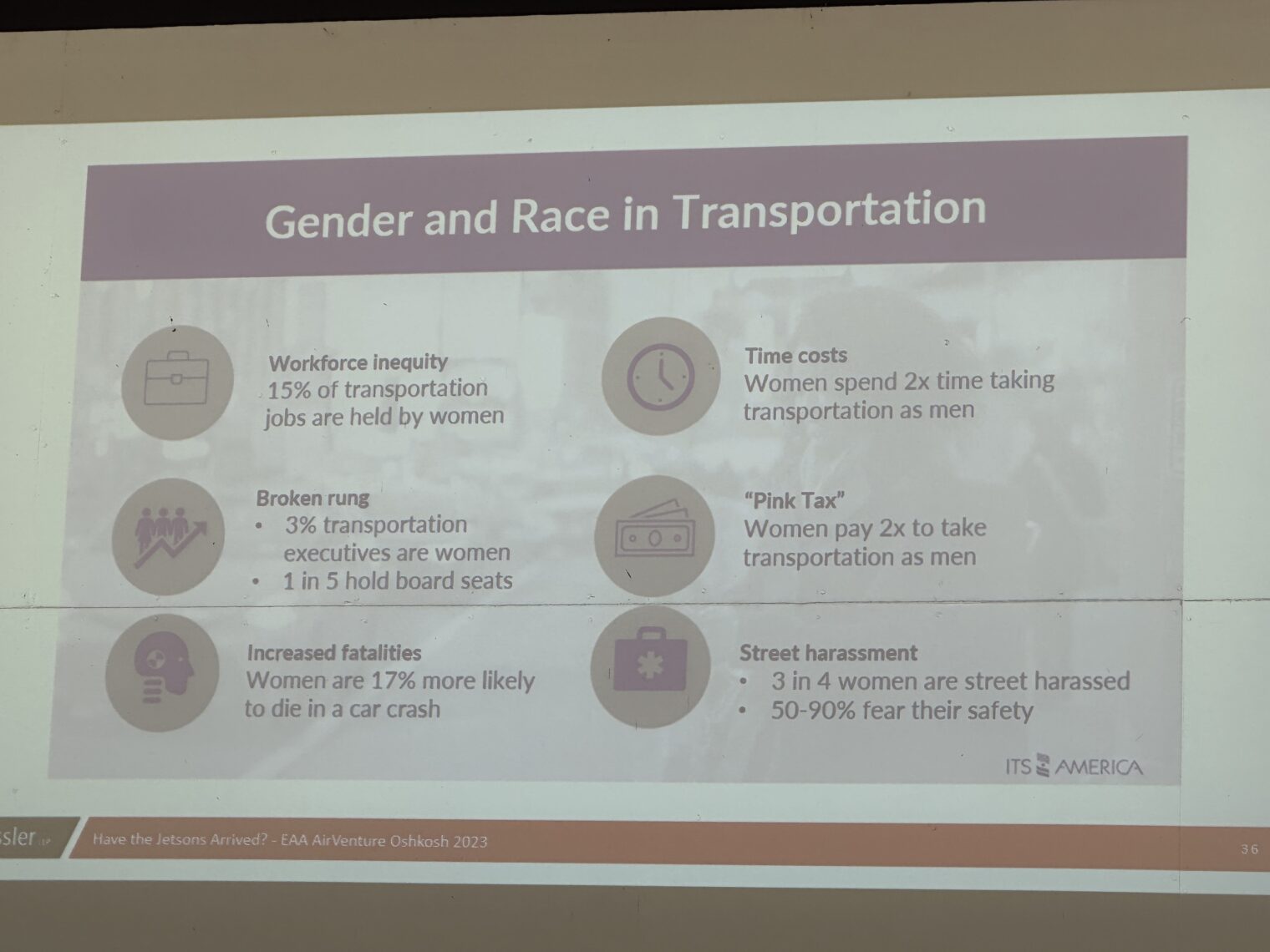The best talk that we attended at Oshkosh (EAA AirVenture) was by Mike Stevens, a Cirrus test pilot, on a verification flight for the parachute system in the Vision Jet. The FAA did not demand this test, but Cirrus decided to do it anyway. Landing under the parachute carries a risk of back injury and destroys the airframe, so the idea was to cut the deployed ‘chute away, as had been done on a Cirrus SR20 test flight two decades earlier, and then fly the airplane to a runway. Stevens showed us video of the SR20 flipping over after the cut-away and said “that’s a little sporty to do in a jet.” It was impressive to see what had to go into the planning of the operation, including, for example, nets to protect the engine inlet from sucking in fragments of the cords.
“Tumbleweed” gave us a good talk on the Burning Man Airport, including the prep, the surface maintenance, and the new-since-a-few-years-ago air traffic control facility (some of the same controllers who handle EAA AirVenture go out to deal with what in some ways is a bigger challenge). She has been the airport manager in various years so could speak to a variety of aspects of the operation. See also my article Burning Man for turboprop pilots.
The worst talk, by far, was by a federal government worker regarding a four-year struggle (or five?) to create a mobile-friendly version of www.aviationweather.gov. We lasted about 30 minutes and hadn’t heard anything about what the site could do for pilots. The entire talk was about the struggles of insiders, e.g., moving hosting providers. (Pilots still don’t have any simple source for a cloud tops forecast, which was formerly part of the “area forecast” that was discontinued in favor of these unusable web sites. If you can climb over the tops of clouds you’ll be ice-free in the Northeast and bump-free in Florida, so it is important to know in advance. (Elites in pressurized aircraft don’t care because they can always keep climbing.))
Russell Klingaman, a lawyer, gave a talk about the Wright brothers and their patent litigation (“the aileron wars”). For Klingaman, the Wright brothers are villains who held back aviation in the U.S. by 10-20 years. They had wanted to produce as few airplanes as possible and make as much money as possible via patent litigation.
Timothy Ravich, an aviation attorney at a big firm in Chicago, gave an overview talk on eVTOL. It was light on the practical and legal barriers these folks are going to face in getting their products FAA certified and heavy on the social injustice suffered by Americans who identify as “women”. In the slide below, we learn that women spend twice as much time taking transportation as men, pay twice as much when they do need transportation, and are more likely to die in a car crash. As Bill Burr points out, a lot of women do the hardest job in the world of being a mother and therefore shouldn’t have to incur much risk or cost of transportation (since staying home in pajamas is always an option). Nobody in the audience challenged any of these statistics. (AAA says that men spend more time driving than women; IIHS says that men are more likely to be killed in car accidents.)
Seth Washburne opened up about trying to transition from a Cessna 172 into a DC-3 restoration project that went off the rails and cost $2 million in pre-Biden money.
We didn’t make it to even half of the talks that sounded interesting. I’m especially sorry that I didn’t get to meet Zara Rutherford, who flew around the world VFR recently. There was also a talk on rebuilding a Boeing B-17. That’s what next year is for!
Let’s also not forget after hours. A few images from the SOS Brothers Beer Tent, across from our Walmart tent:



I’m sure that a lot of learning happens at SOS University!


What about the MOSAIC NPRM allowing Sport Pilots to fly traditional trainers with useful payload and crosswind ratings?
https://www.federalregister.gov/documents/2023/07/24/2023-14425/modernization-of-special-airworthiness-certification
The Executive Summary says that Sport Pilots can do Night Flying and potentially some “aerial work.” But night flight requires an FAA medical, which is out of reach for many Sport Pilots. Also, the prohibition on “in furtherance of a business,” which has been interpreted (by the FAA itself, of course) to forbid flying to meetings or commuting.
(And note to other readers: the public comment period is currently open.)
The SR20 parachute test is a 13 year old video. The 6 year old video showing the SF50 parachute test doesn’t have the cutaway. Who knew something that dangerous would be an oshkosh only show.
I think in fairness being a mother is a tough job for a couple of years, till the kid is say around 3-4 then it is a not very hard job for a few years and thereafter it is not really a job at all. After the kid is say one or something the job can be offloaded to unskilled labor for the cost of unskilled labor — if so decided.
Just because you can doesn’t mean you should.
I think there is a significant risk to having one’s children’s environment during periods of rapid neurological development shaped by minimum-wage workers from low-IQ, low-achievement societies with dubious command of economically viable languages like English.
The Kennedys used an English nanny named Maude Shaw, which sounds much less risky, but also much more expensive. Au Pairs are expected to be educated and come from functioning civilizations.
Also, the difficulty of a job does not correlate with the importance of said job.
Electric quad copters don’t glide. They fall.